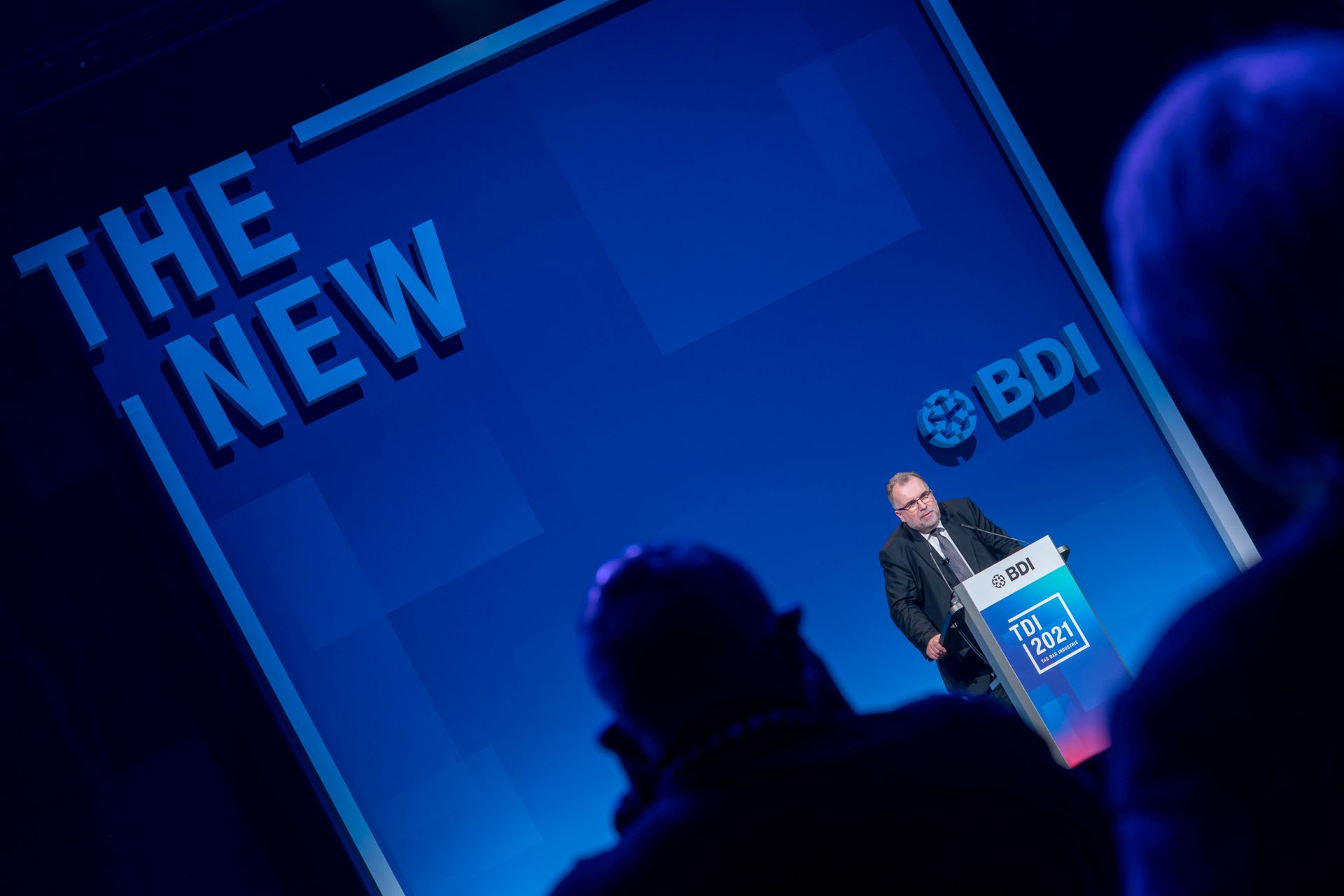Industry Dashboard: Manufacturing as the backbone of German economy
The industry is an important employer.
In 2020, 7,484,697 people were employed
in manufacturing in Germany. The sectors
with the most workers were machinery construction (1,151,175), metal products manufacturing (877,603), and food and
feed production (855,229).
The industry is contributing to climate protection. In 1990, in Germany, the amount of CO2 emissions generated through industrial processes was 60 million tons – in 2020, it was just 42 million tons. That represents a decrease of 30%. By comparison, the gross domestic product more than doubled nominally in the same period, also thanks to industry.
Source: BMWK; as of 2020
The industry drives innovation. Despite just 20% of the German workforce being em-ployed by the industrial sector, the industry was responsible for 9 out of 10 patent applications in 2019. Baden-Württemberg, Lower Saxony, and Hamburg particularly stand out thanks to their inventive spirit.
The industry has increased its level of performance. Between 1991 and 2021, the level of productivity in the manufacturing industry increased by 80%. In the same period, productivity in other industrial areas only increased by 25%.
The industry makes Germany an export nation. In 2021, products of the manu-facturing industry, together with business services, accounted for 86% of all German exports. The total export value of these products came in at EUR 1.336 trillion, which is equal to more than twice the amount of the German federal budget (expenditures) for 2021.
Source: Federal Statistical Office of Germany; as of 2021
The industry has enormous economic importance. Together, the manufacturing industry and business service providers accounted for around one-third of Germany’s total gross value added. Particularly in crises, the industry is often the economic loco-motive in Germany. By comparison, the trade, transport, and hospitality sector accounted for just under 16%.
Based on manufacturing sales share in 2021, the three biggest industrial sectors in Germany were the automotive (21%), machine construction (12%), and chemical (11%) industries. In fourth and fifth place were electrical engineering (10%) and food (9%).
The industry is investing. In 2021, the industry in Germany invested EUR 63 billion. The money went to tangible assets such as machinery, property, and tools. By comparison, investments from the 2021 federal budget equated to around EUR 46 billion – 27% less than those from the industry.
Sources: BMF, Federal Statistical Office of Germany
Mobility is becoming electric thanks to German industry. In the 2021 E-Mobility Index, Germany came in second place behind China as the most important producing country for electromobility. Countries were evaluated based on three parameters – technology (performance), industry (production), and market (turnover). Germany scored particularly highly in the market area with high figures for electric cars.
Source: Roland Berger
Germany is the leading exporter of medicines. 15% of all globally exported pharmaceuticals came from Germany in 2019. The overall value of global pharmaceutical exports amounted to EUR 540 billion. Between 2008 and 2019, Germany increased its exports by 90% to a value of EUR 80 billion.
Source: vfa
Contact





